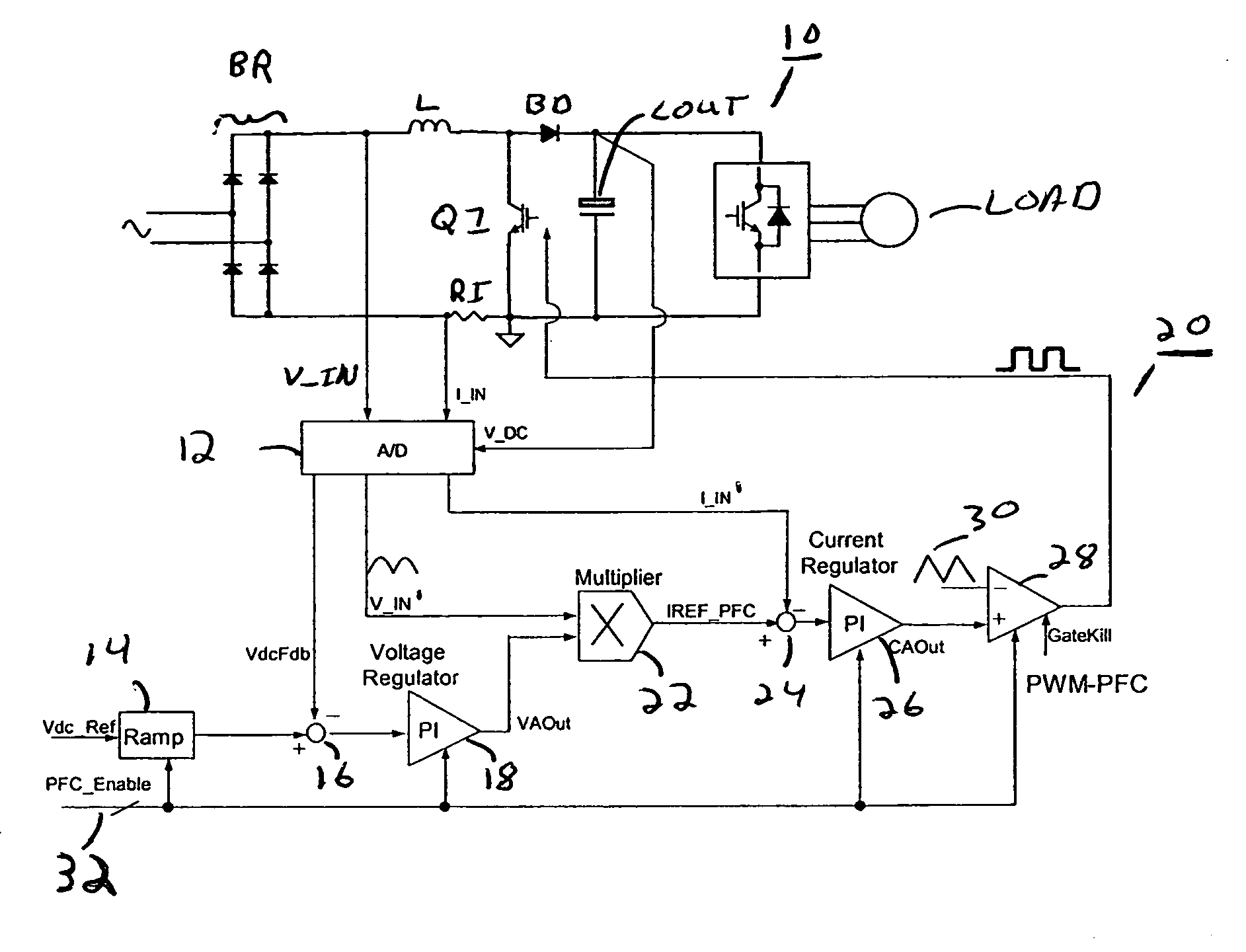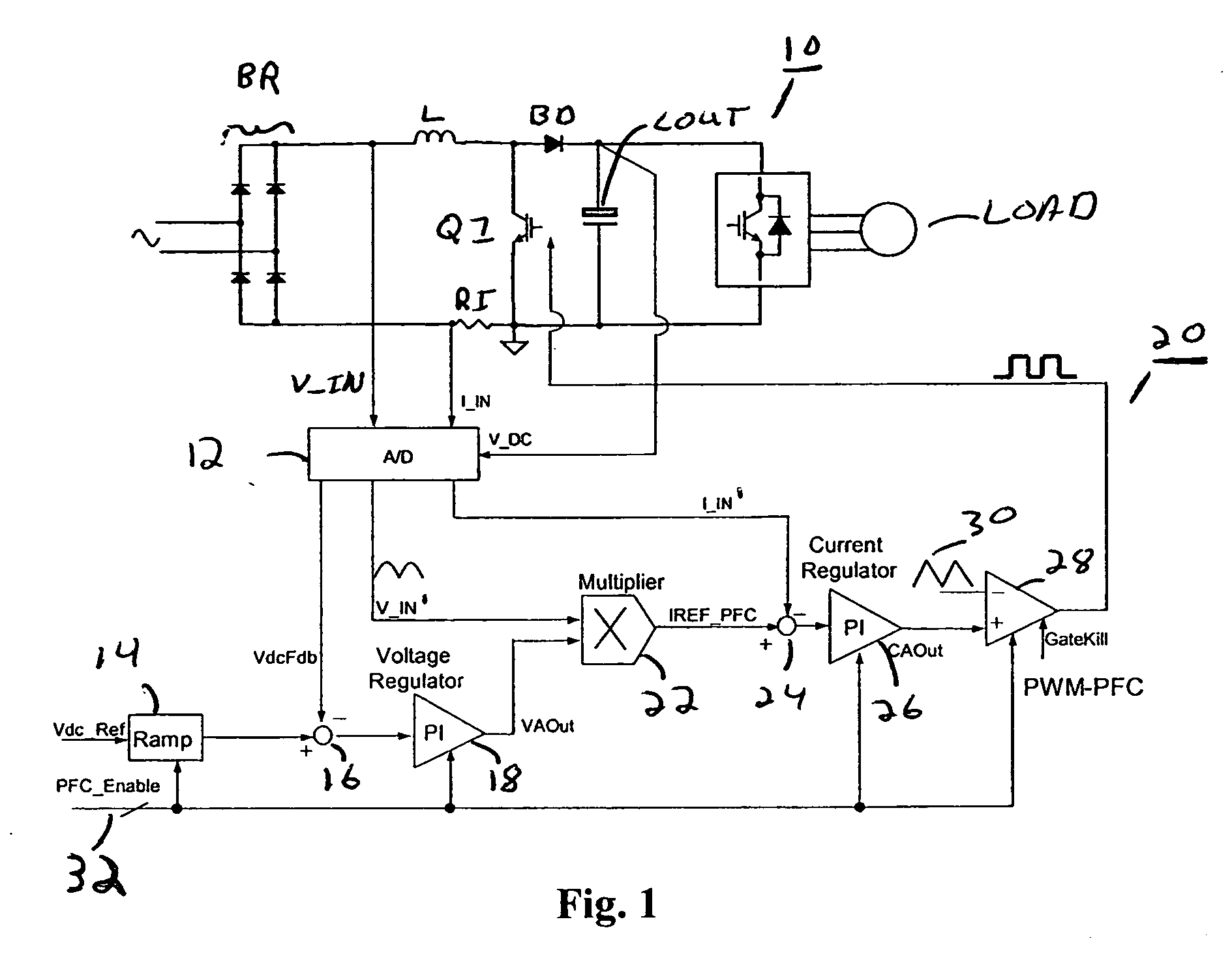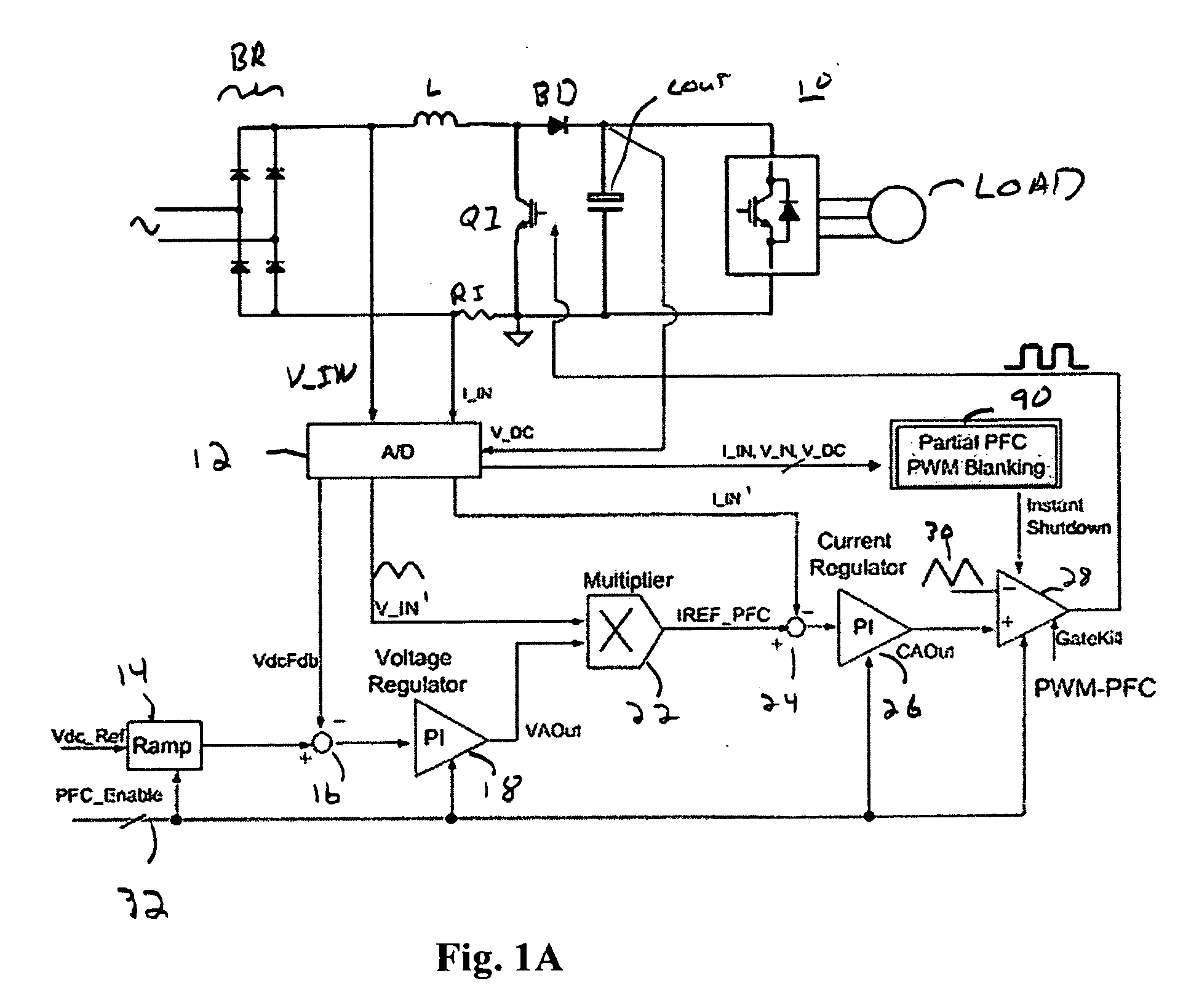Digital implementation of power factor correction
a technology of power factor and digital implementation, applied in the direction of electric variable regulation, process and machine control, instruments, etc., can solve the problems of -hold (s/h) delay, not typically useful for regulating time-varying signals, and no steady-state signals for pi controllers to regula
- Summary
- Abstract
- Description
- Claims
- Application Information
AI Technical Summary
Benefits of technology
Problems solved by technology
Method used
Image
Examples
Embodiment Construction
[0046] It is noted that while the PFC circuit 10 illustrated in FIG. 1 illustrates a conventional boost PFC circuit, the control concept and implementation of the present invention are similarly applicable to a bridgeless PFC circuit 10a, such as that illustrated in FIG. 2, for example. More detailed information regarding power factor correction and digital control thereof in bridgeless PFC circuits can be found in U.S. patent application Ser. No. 11 / 267,516 of Yong Li entitled DIGITAL CONTROL OF BRIDGELESS POWER FACTOR CORRECTION CIRCUIT filed on Nov. 4, 2005 and incorporated by reference herein above.
[0047] As an initial matter, the PFC current regulation loop as illustrated in FIG. 3, for example will be described, and particularly, how the current regulation is accomplished by PI controller 26. The final output of the PFC current regulation loop is the duty cycle command PWM-PFC. Utilizing PWM switching-cycle average and modeling of the PFC circuit, the instantaneous switch-on ...
PUM
 Login to View More
Login to View More Abstract
Description
Claims
Application Information
 Login to View More
Login to View More - R&D
- Intellectual Property
- Life Sciences
- Materials
- Tech Scout
- Unparalleled Data Quality
- Higher Quality Content
- 60% Fewer Hallucinations
Browse by: Latest US Patents, China's latest patents, Technical Efficacy Thesaurus, Application Domain, Technology Topic, Popular Technical Reports.
© 2025 PatSnap. All rights reserved.Legal|Privacy policy|Modern Slavery Act Transparency Statement|Sitemap|About US| Contact US: help@patsnap.com



